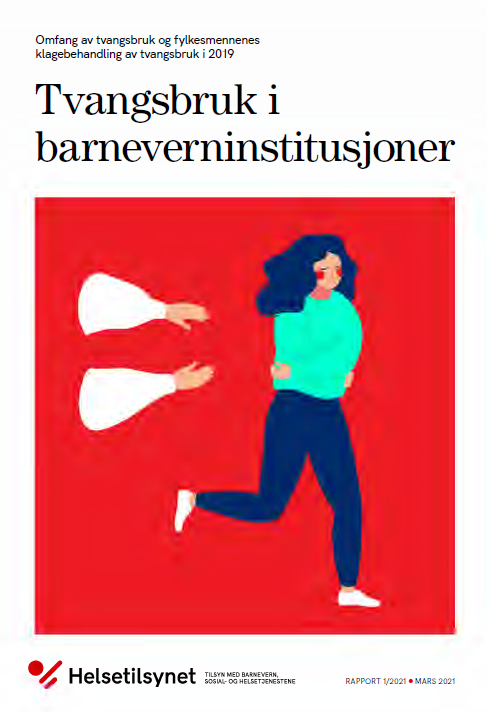Use of coercion in child welfare institutions
Scope of the use of coercion and the handling of complaints by county governors in 2019
Report by the Norwegian Board of Health Supervision 1/2021

The report is a continuation of the Norwegian Board of Health Supervision’s report on the use of coercion in child welfare institutions in 2017 and 2018. The report summarises the county governors' records concerning the use of coercion, and complaints concerning such use on a national basis in 2019. The Norwegian Board of Health Supervision's overview shows that use of coercion increased by 7 percent on a national basis between 2018 and 2019. From 2017 to 2019, the number of registered decisions rose by 16 percent. The most frequently registered types of coercion are drug testing, coercion in acute hazardous situations and restrictions in the right to move around. The Norwegian Board of Health Supervision has also conducted a survey amongst the country’s county governors concerning the children who are subjected to the most coercion in the counties. The report highlights how much coercion some children are subjected to.
The county governors dealt with 579 complaints concerning the use of coercion in 2019 on a national basis. This represents about 9 percent of the decisions which were registered nationwide. The county governors upheld complaints in 18 percent of cases on a national basis. Most complaints are received concerning the use of coercion in acute hazard situations, and this is also the area where county governors most often uphold complaints.
The Norwegian Board of Health Supervision is determined to ensure that children at child welfare institutions consider the complaint scheme to be useful. If children are to actually complain, it is vital that they feel they will be taken seriously when they believe that the coercion that their institution has used was unlawful. Coercion represents a major intervention, and getting an independent body to assess whether or not an institution’s conduct was appropriate in the circumstances is an important matter. The Norwegian Board of Health Supervision believes that there should be a broad discussion amongst all the stakeholders in the child welfare sector concerning whether the complaint scheme is adequate and practised in a way which is appropriate for children who live in a child welfare institution.